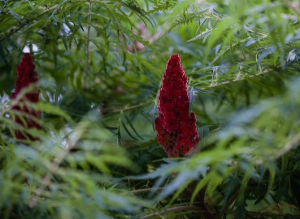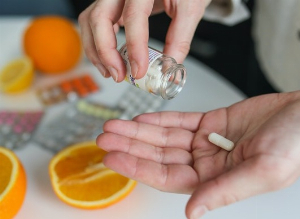Toxic plants: what are the dangers?
Published 12 Jun 2023 • By Polina Kochetkova
Outdoor activities like hiking and gardening can be very pleasant experiences, yet some precautions should be considered to fully enjoy your time in nature. One thing to pay attention to is the plants and greens that surround you. Even though it can be hard to resist picking up a flower and taking it with you, it is important to know what effect such a plant can have on your health.
How to identify toxic plants? What to do if you get an allergic reaction from a toxic plant? And how to protect yourself from negative exposure?
Read this article to find out!

What is considered a toxic plant?
The UK is known for having a variety of beautiful plants that can be encountered, from your own backyard to a hiking trail, yet some of them can be more dangerous than it seems. The broad selection of secondary chemicals that poisonous plants create can have a negative impact on both human and animal health, leading to poisoning and even death.
Toxic plants and flowers can be often confused with harmless ones. One of the most frequent causes of acute allergic contact dermatitis in the world is poison ivy, together with its siblings - poison oak and poison sumac, which are believed to harm millions of people annually. Luckily poison ivy and poison oak are not common in UK wildlife. Another variation of ivy - English ivy is not hazardous, yet it still needs to be handled carefully since its sap can irritate sensitive skin.
Diagnosis of plant toxicoses generally depends on the patient's medical history and their associations with irritant plants.
The word "poisonous" is used to describe a wide range of responses or outcomes. Allergies (caused by spores, pollen, or naturally occurring volatile compounds released into the air by plants), skin rashes or dermatitis (caused by direct or indirect contact with allergenic or irritating compounds), skin photosensitization (caused by exposure to irritating or allergenic compounds), and internal poisonings or irritations (from ingestion of plants or plant parts) are some of the main effects.
What are the most common toxic plants?
Some of the toxic plants you may encounter when spending time outdoors can include:
- Giant hogweed (Heracleum mantegazzianum)
- Deadly nightshade (Atropa belladonna)
- Foxglove (Digitalis purpurea)
- Lords-and-ladies (Arum maculatum)
- Monkshood (Aconitum napellus)
- Poison hemlock (Conium maculatum)
Some of the most common toxic elements in plants include:
Alkaloids are complex, physiologically active nitrogenous chemicals that often have a bitter taste and usually do not dissolve in water.
Example: Poison hemlock (Conium maculatum).
Glycosides are elements that create one or more sugars (glycones) and one or more poisonous aglycones. They are typically tasteless, crystalline solids.
Example: English ivy (Hedera helix).
Oxalates are made up of soluble oxalates and oxalic acid; poisonings are frequently linked to tiny calcium oxalate crystals that are insoluble and cause mouth irritation when consumed.
Example: Dumb cane (Dieffenbachia species).
Common forms of poisoning and representative plants for each include skin irritation (giant hogweed), blood poisoning (wild cherry), nerve poisoning (mushrooms), cardiac poisoning (foxglove) and others.
How to protect yourself from negative exposure to a toxic plant?
One of the best ways to prevent toxic poisoning is by identifying the plant you have encountered.
It is recommended to learn about the plants and flowers in your house and garden. You can do so by calling a local authority or a flower shop to consult with professionals and ask about the possible toxicity of your greens.
Eating berries or plant leaves found outside is one of the easiest ways to get food poisoning and is strongly advised against it. Often poisonous berries have a pleasant and even sweet taste (Jerusalem cherries). Another reason to restrain from wild berries is due to the intense variety and similarity, which can be seen with many well-known plants. You may actually find a blueberry, but a toxic variety, causing nausea, stomachache, and other symptoms of food poisoning.
Unless you are certain of what is burning, avoid breathing in smoke from burning plant life. Exposure to burning poison ivy leaves may cause serious issues.
It is important to teach children not to put any wild leaves, berries, seeds, or mushrooms in their mouths, as it can have dangerous side effects. If you have poisonous greens in your house or garden, make sure that they are out of reach for children and pets.
When hiking in an area with toxic plants, make sure to dress appropriately, limiting access to bare skin, in case of contact with dangerous plants.
It is recommended to own a first aid kit at hand, containing clean bandages, basic medicaments, cleansing wipes, gloves, and scissors.
What to do if you get a negative reaction from a toxic plant?
If you have touched a poisonous plant like poison ivy, giant hogweed, or poison sumac you will shortly experience burning pain, itchiness, irritation, and redness on the skin.
The oil-based volatile substances that give poison trees their itchiness can often spread easily from the initial contact site. This information is frequently overlooked, and after handling poisonous plants, you may unintentionally rub your eyes, which brings more irritation to both hands and eyes. Wash the area rapidly with soap and warm water to avoid this occurrence. The oil becomes more deeply embedded in your skin the longer you postpone the cleaning procedure. Applying calming lotion might help to ease itching.
The level of pain and discomfort depends on each person’s sensibility to toxic allergens. If you experience severe discomfort, you are advised to go to the emergency room with a carefully preserved sample of the plant causing the pain.
If you accidentally ate a poisonous plant, going to the hospital is highly recommended. Before departing to the emergency room, make sure to carefully remove any remaining parts of the plant from the mouth, while wearing gloves, drink a little amount of water, and collect a sample of the plant for further examination at the hospital.
Give it a "Like" and share your thoughts and questions with the community in the comments below!
Take care!
Sources
Outdoor Workers and Poisonous Plant Exposures, CDC.gov
Toxic Plant List, Cccf-fcsge.ca
Poisonous Plants, Portal.ct.gov
Poisonous Plants: Biomarkers for Diagnosis, Sciencedirect.com
Plant Safety, Americanhiking.org
Foxglove and other poisonous plants: A list of toxic plants in the UK, woodlandtrust.org.uk

 Facebook
Facebook Twitter
Twitter



